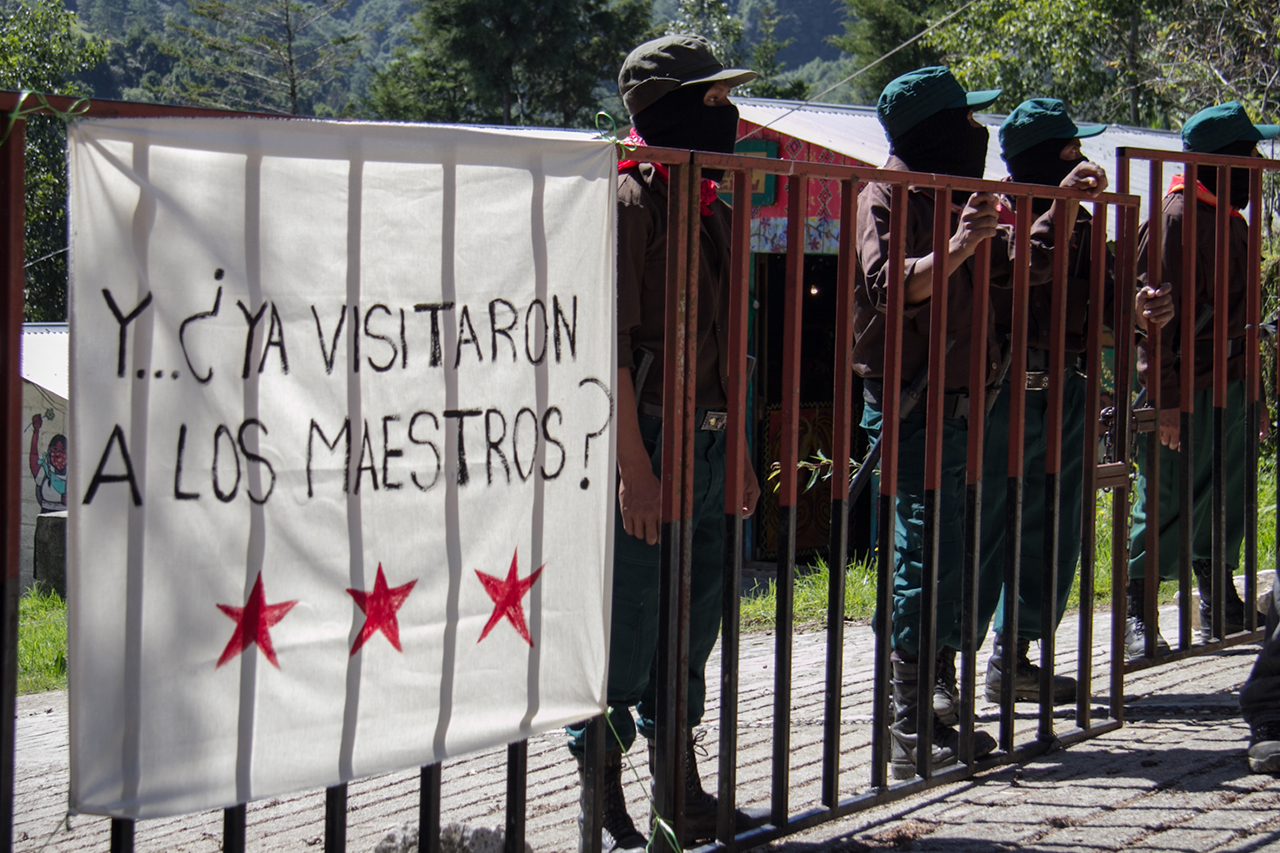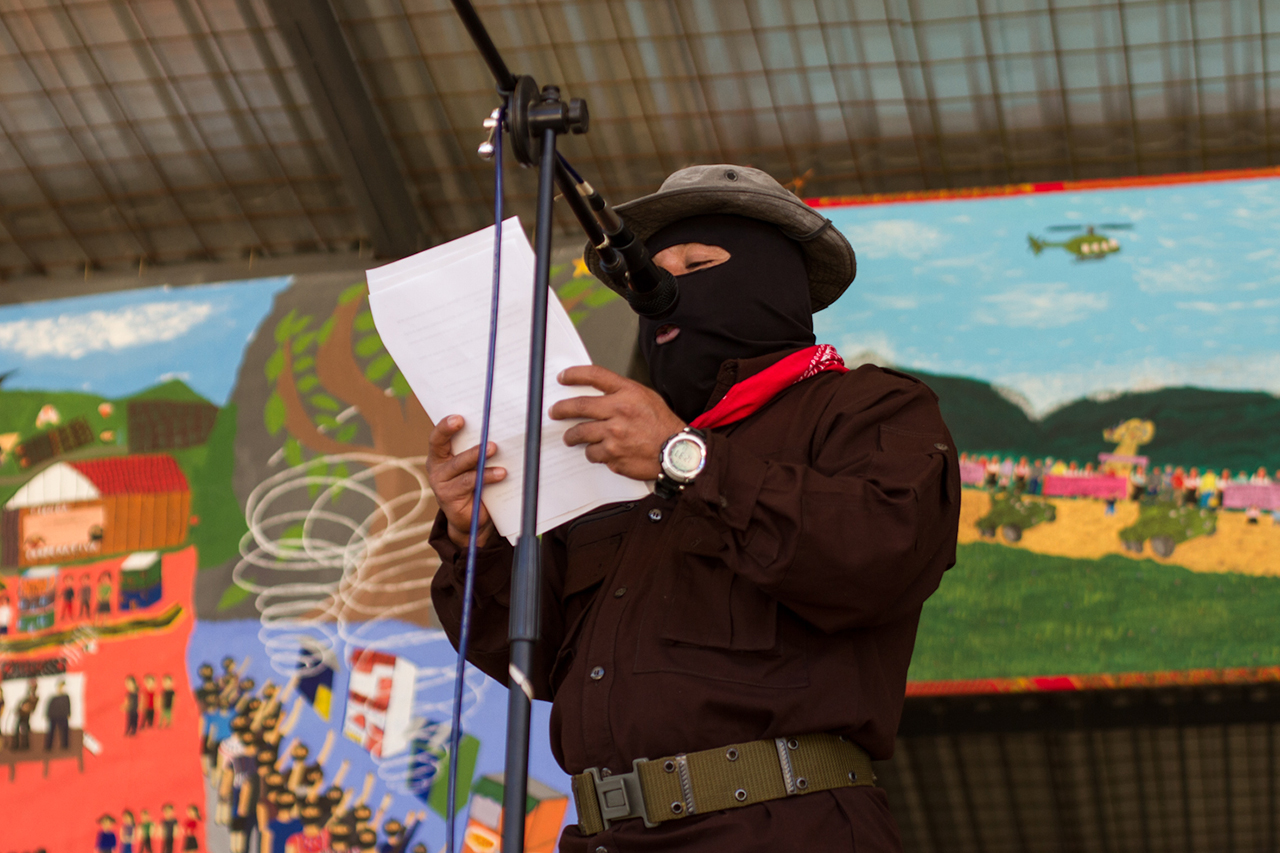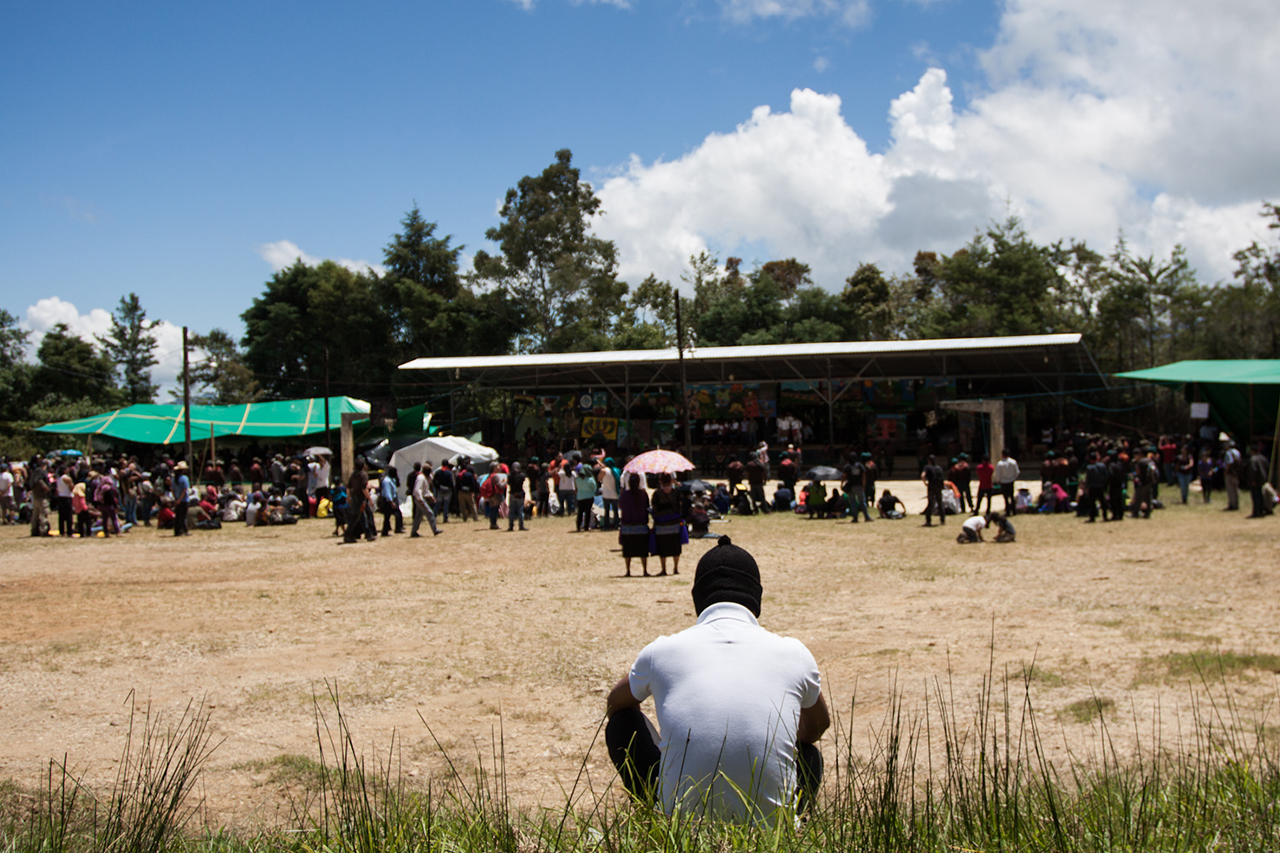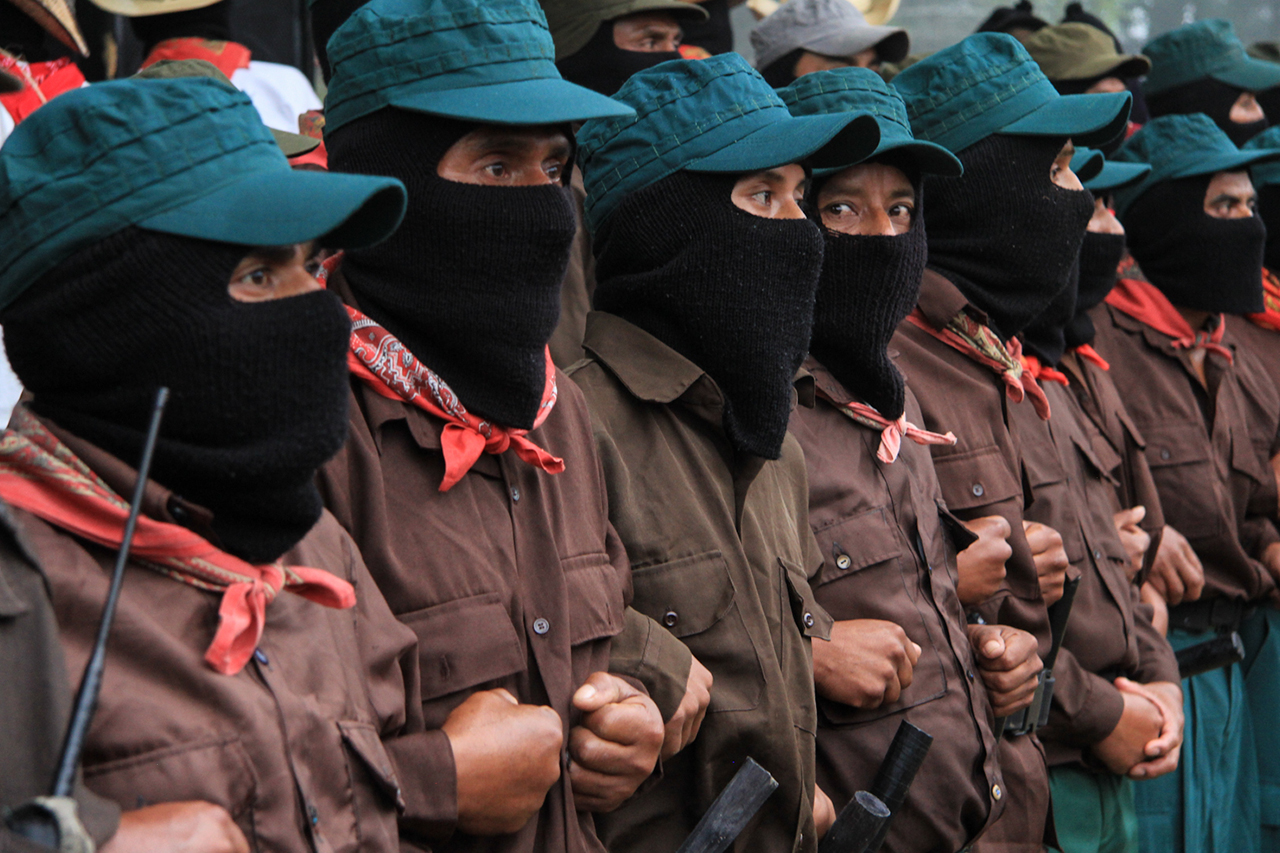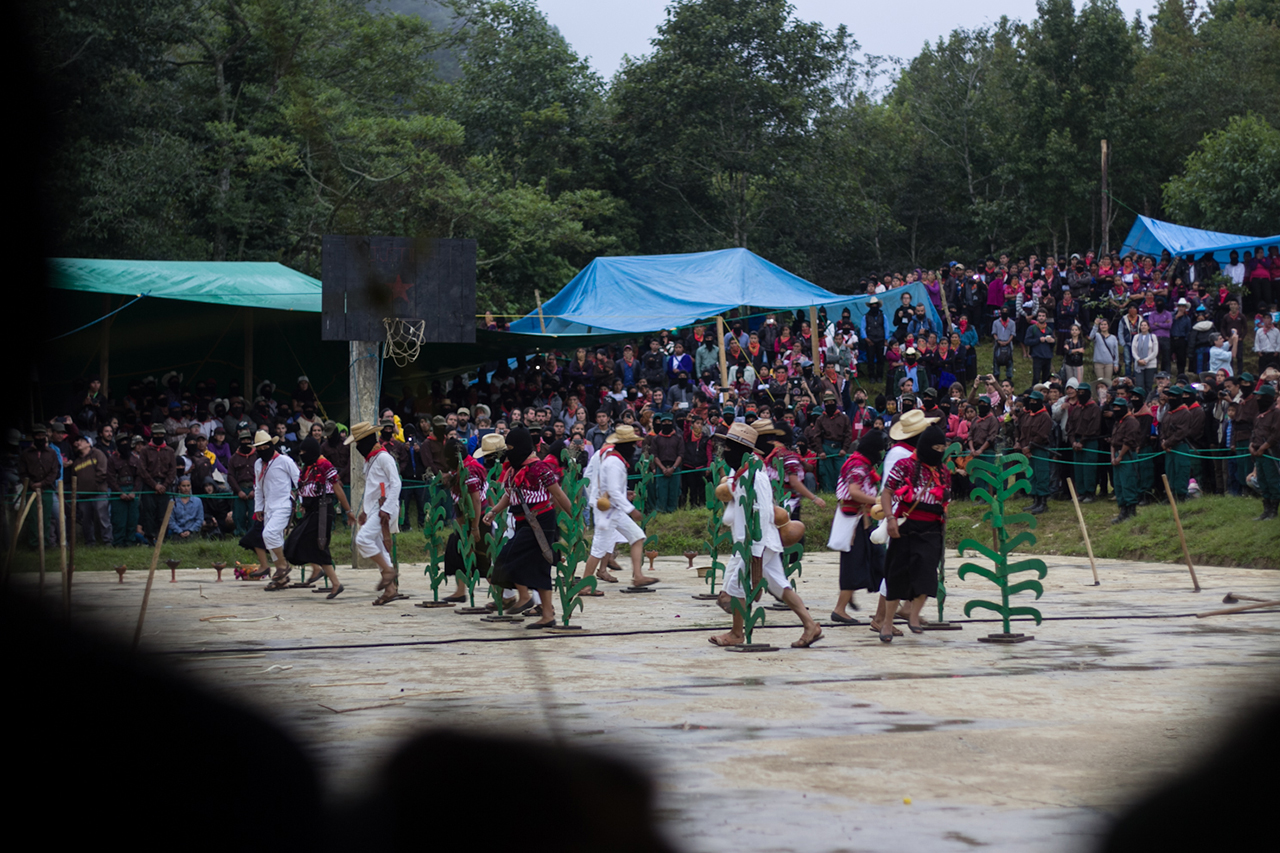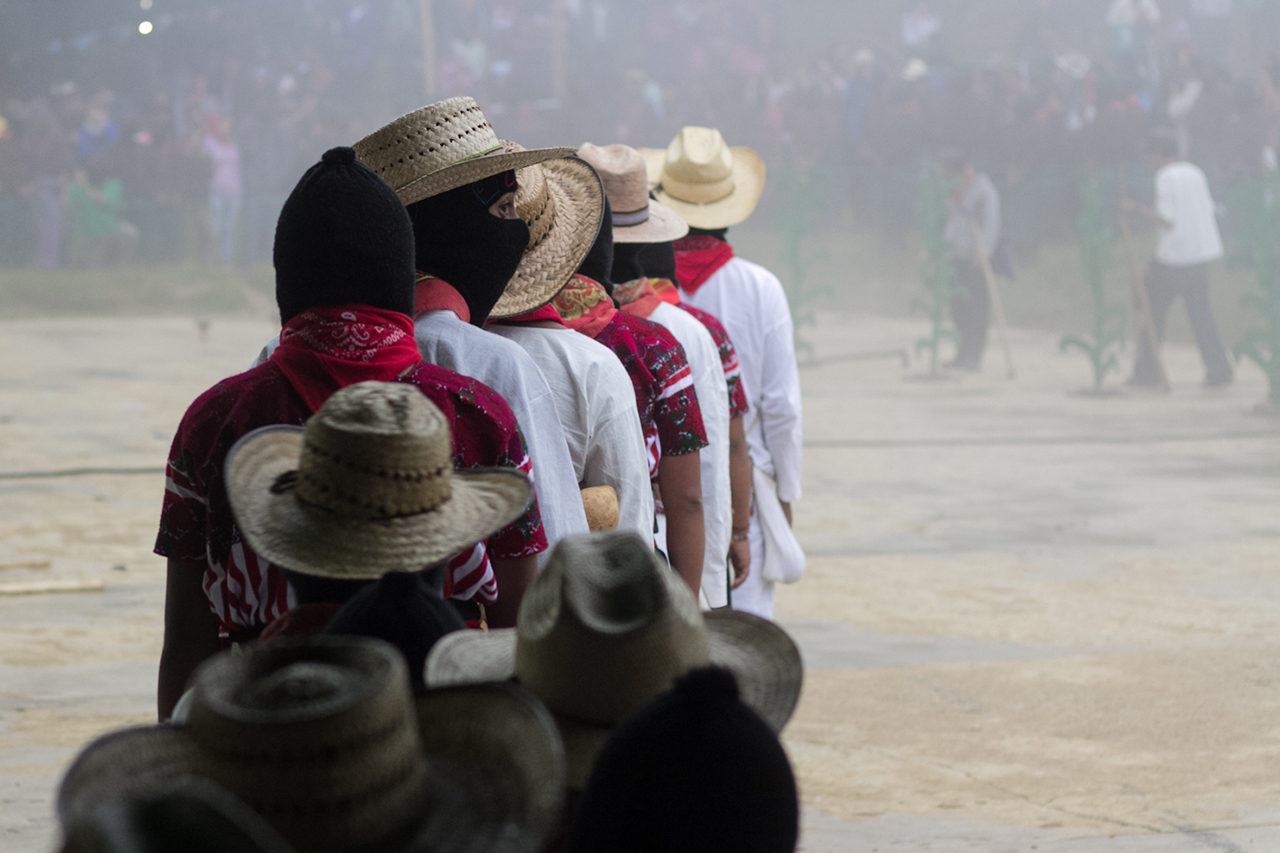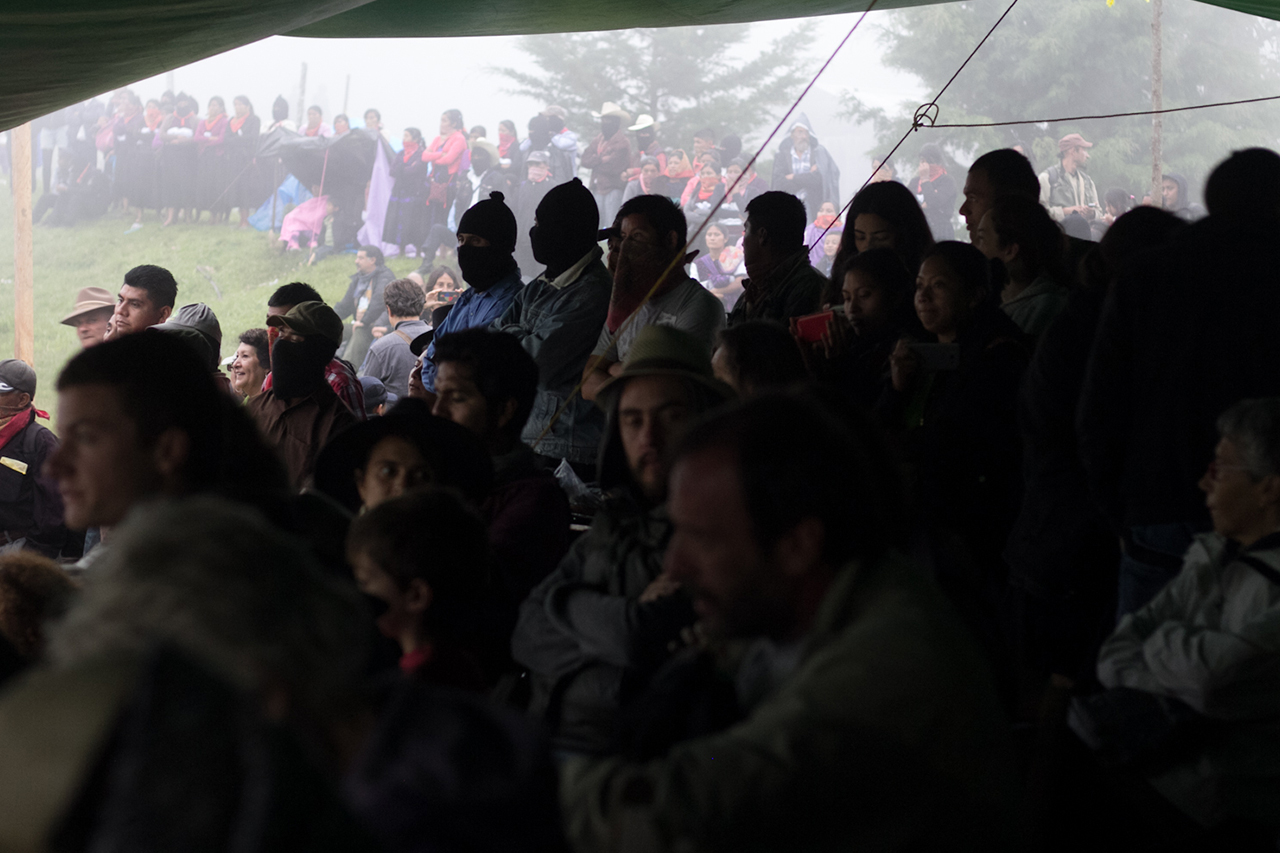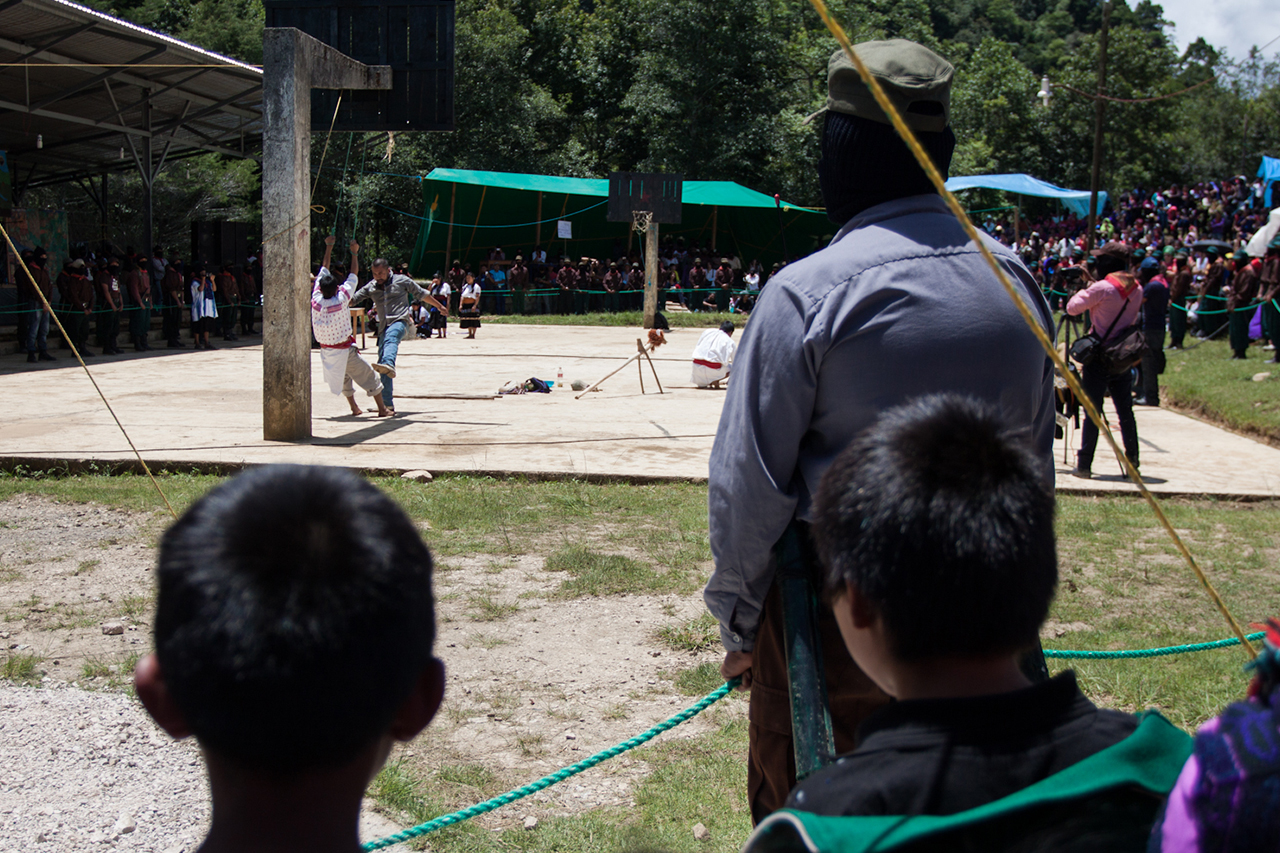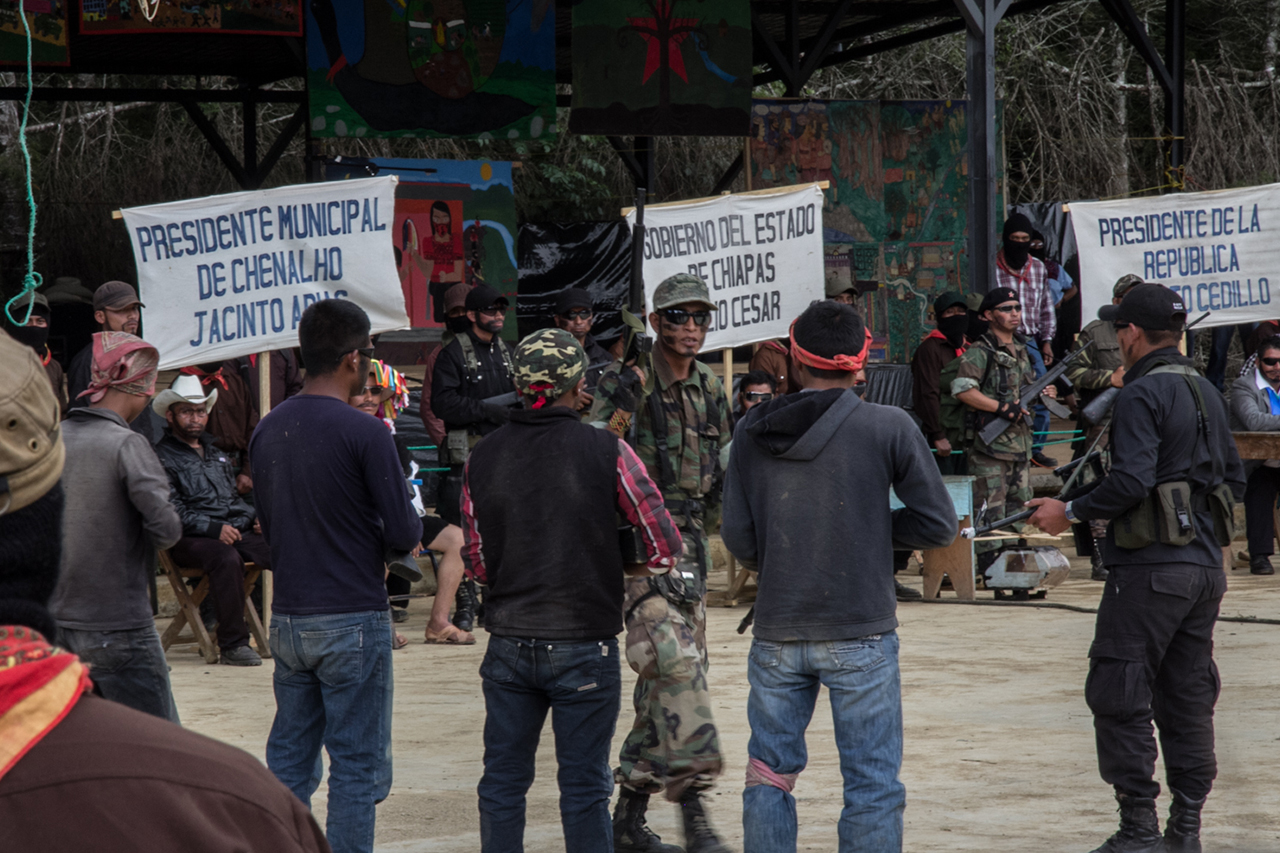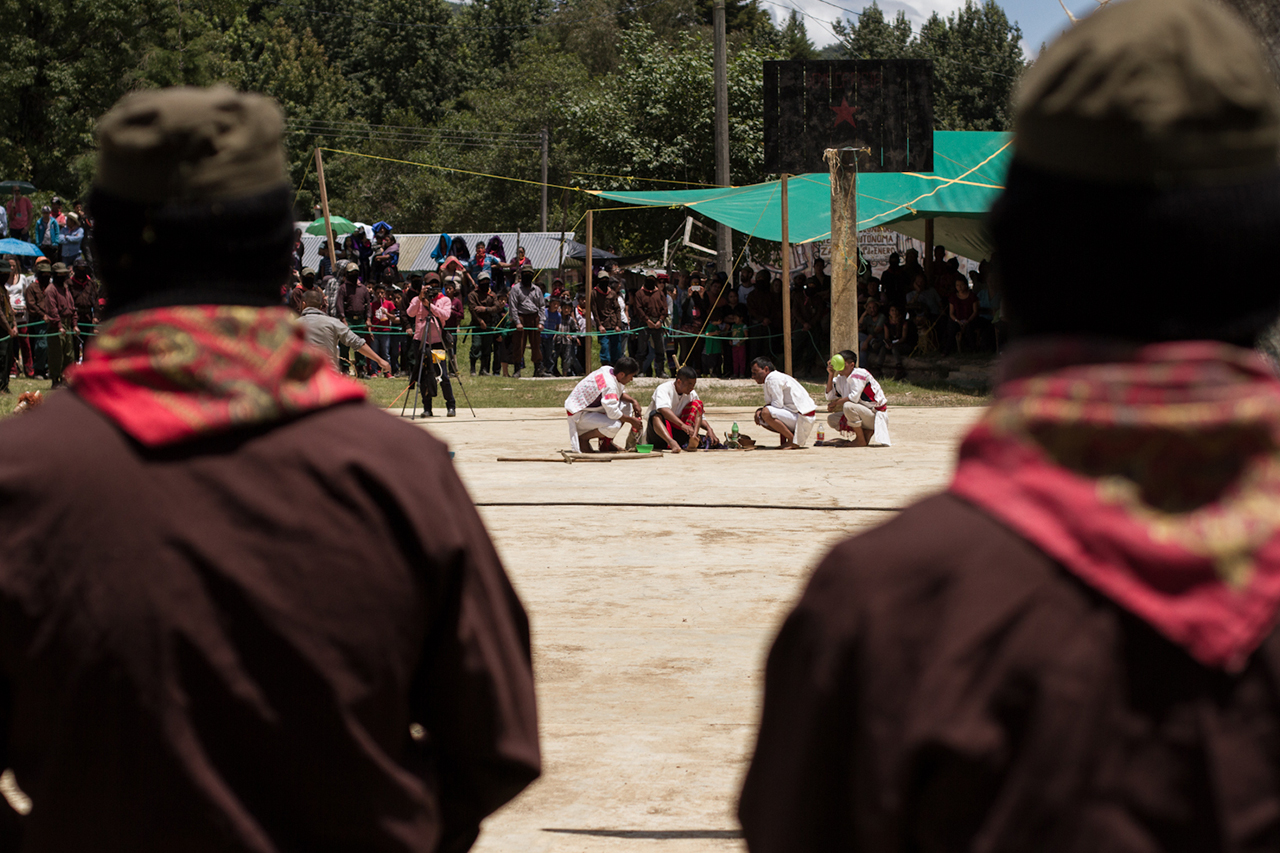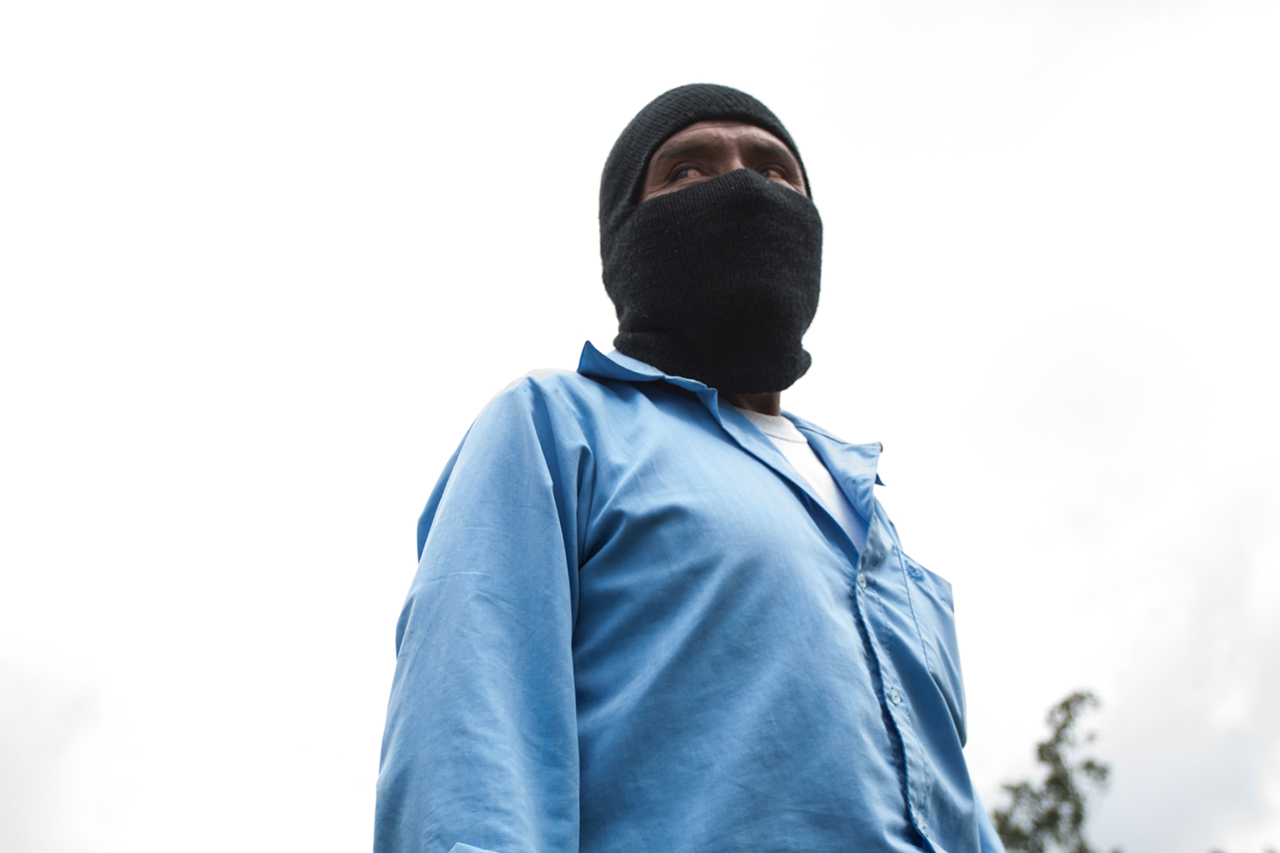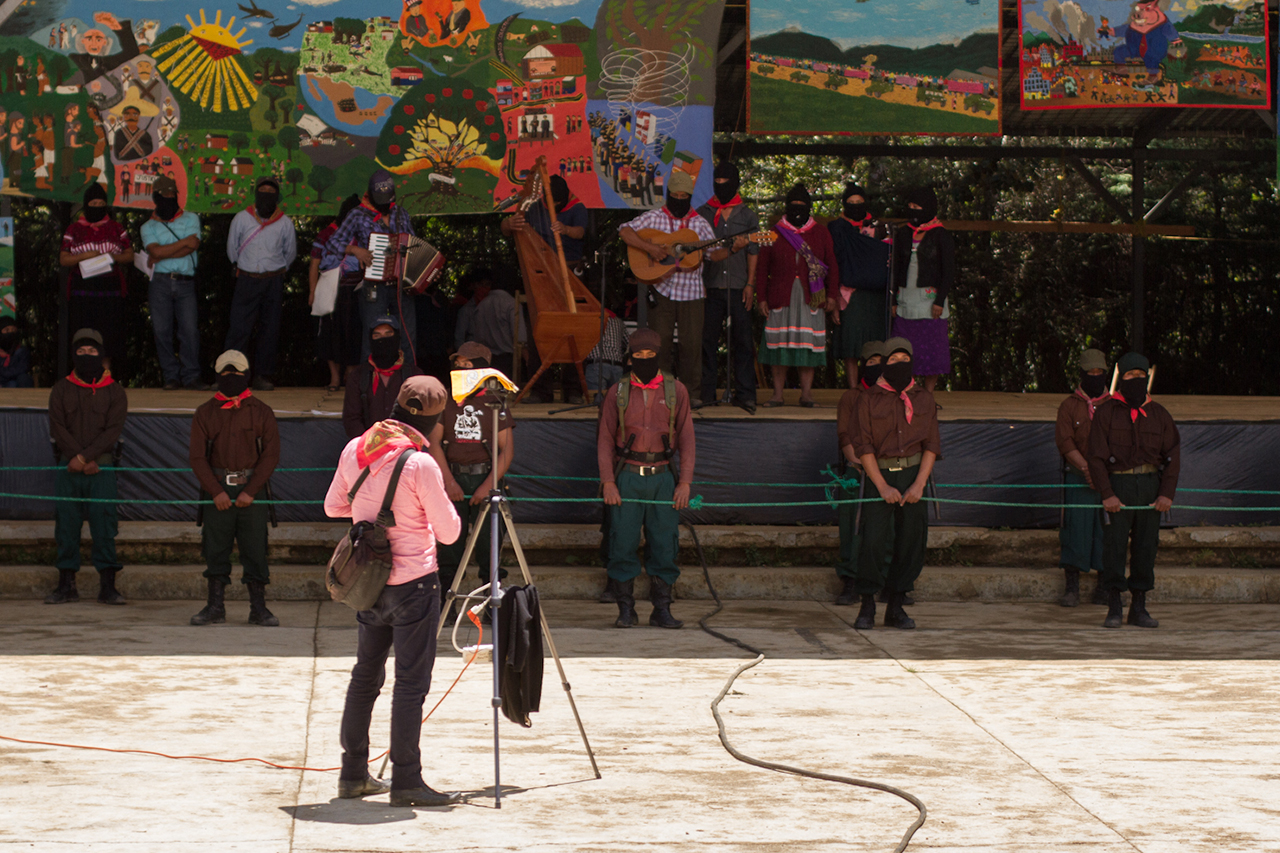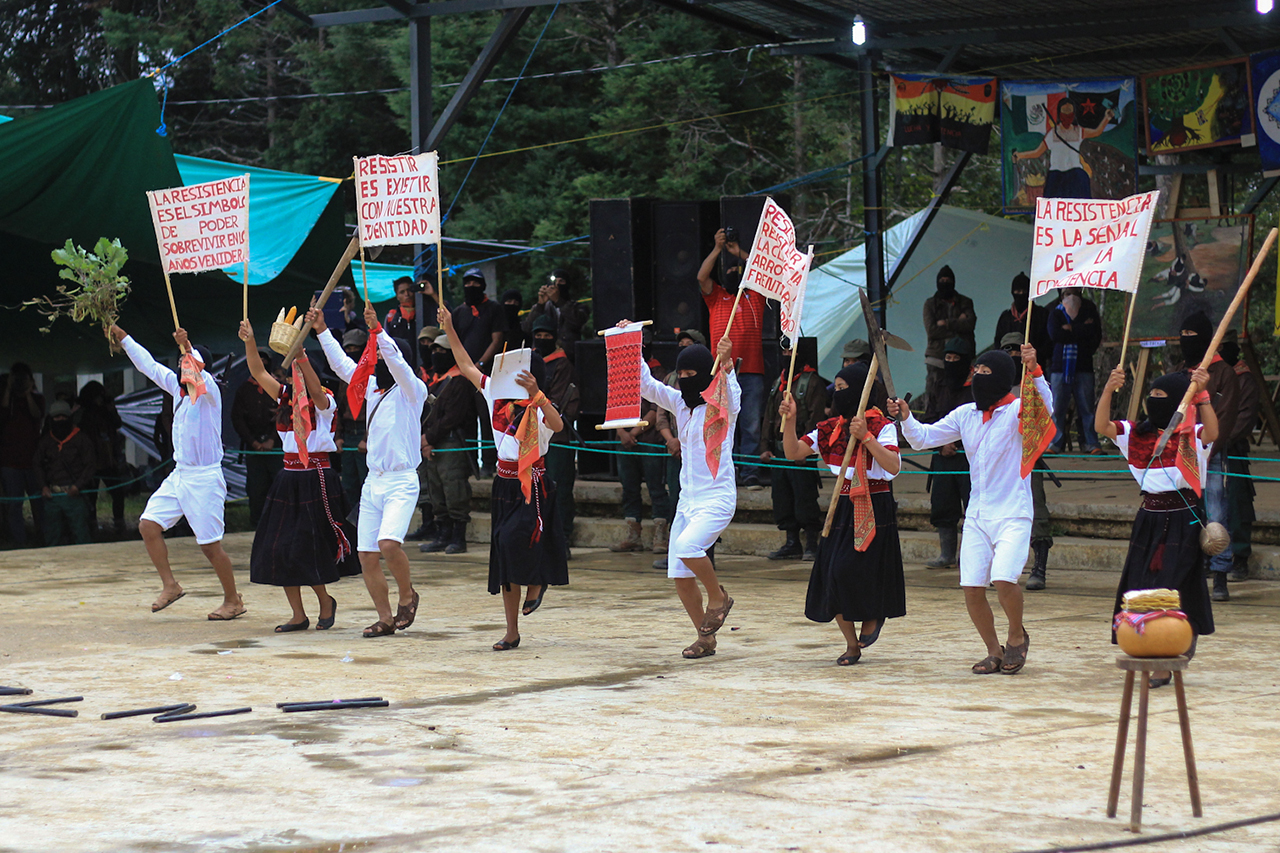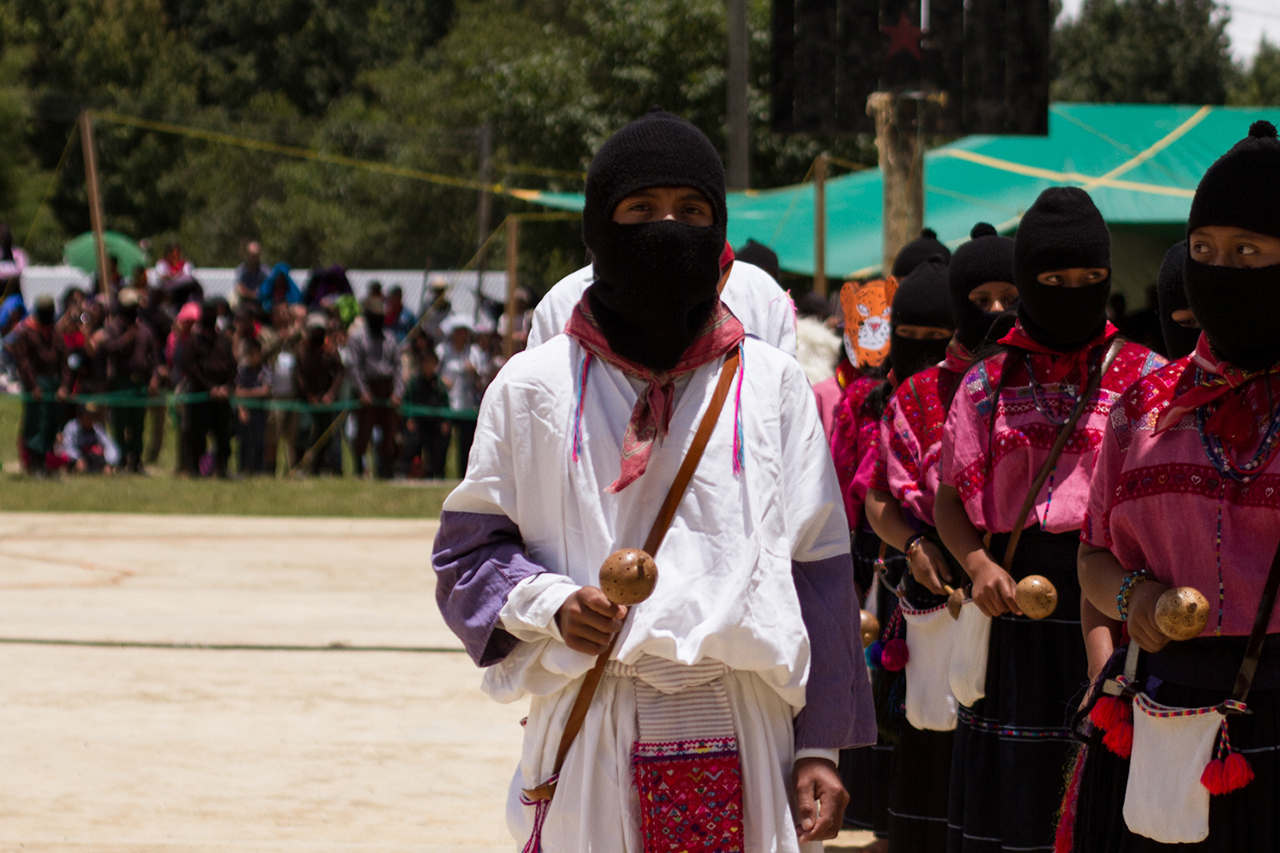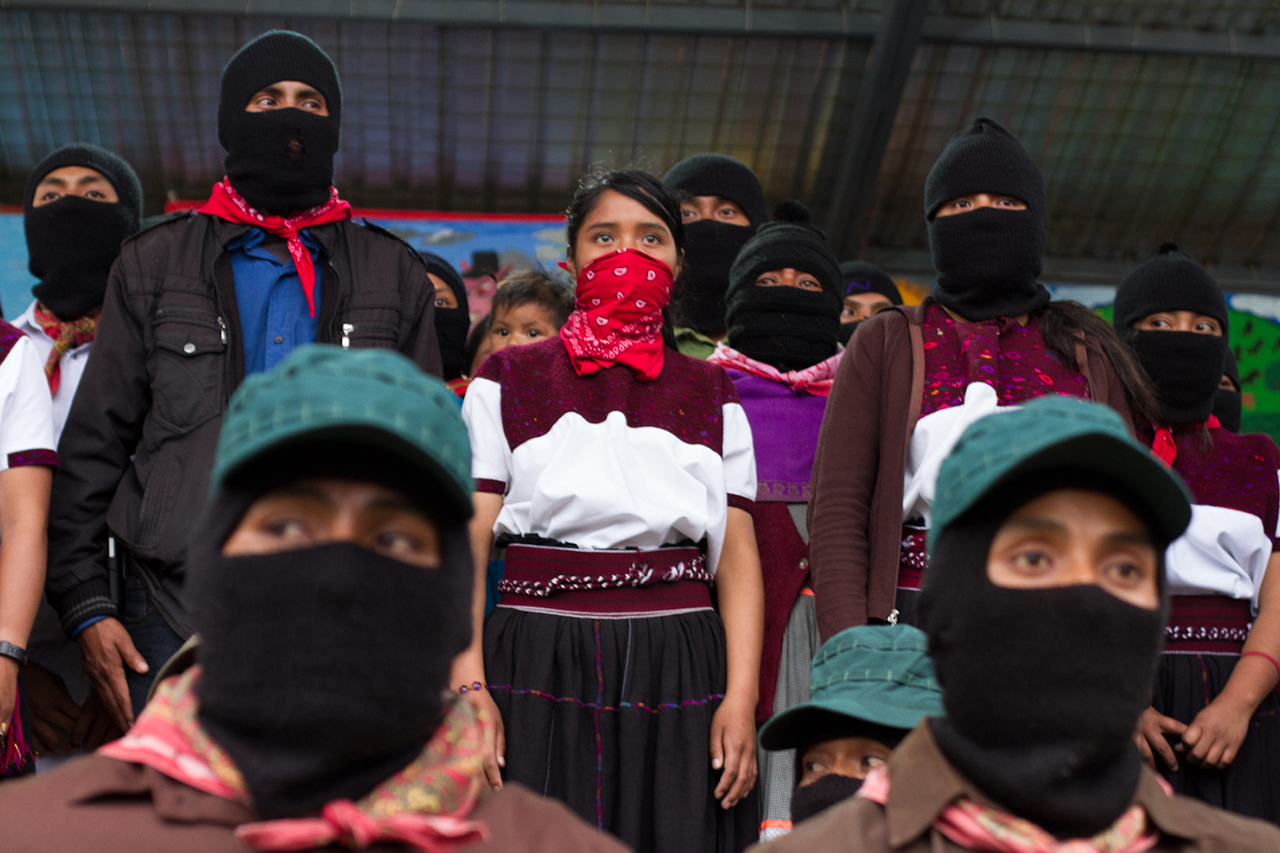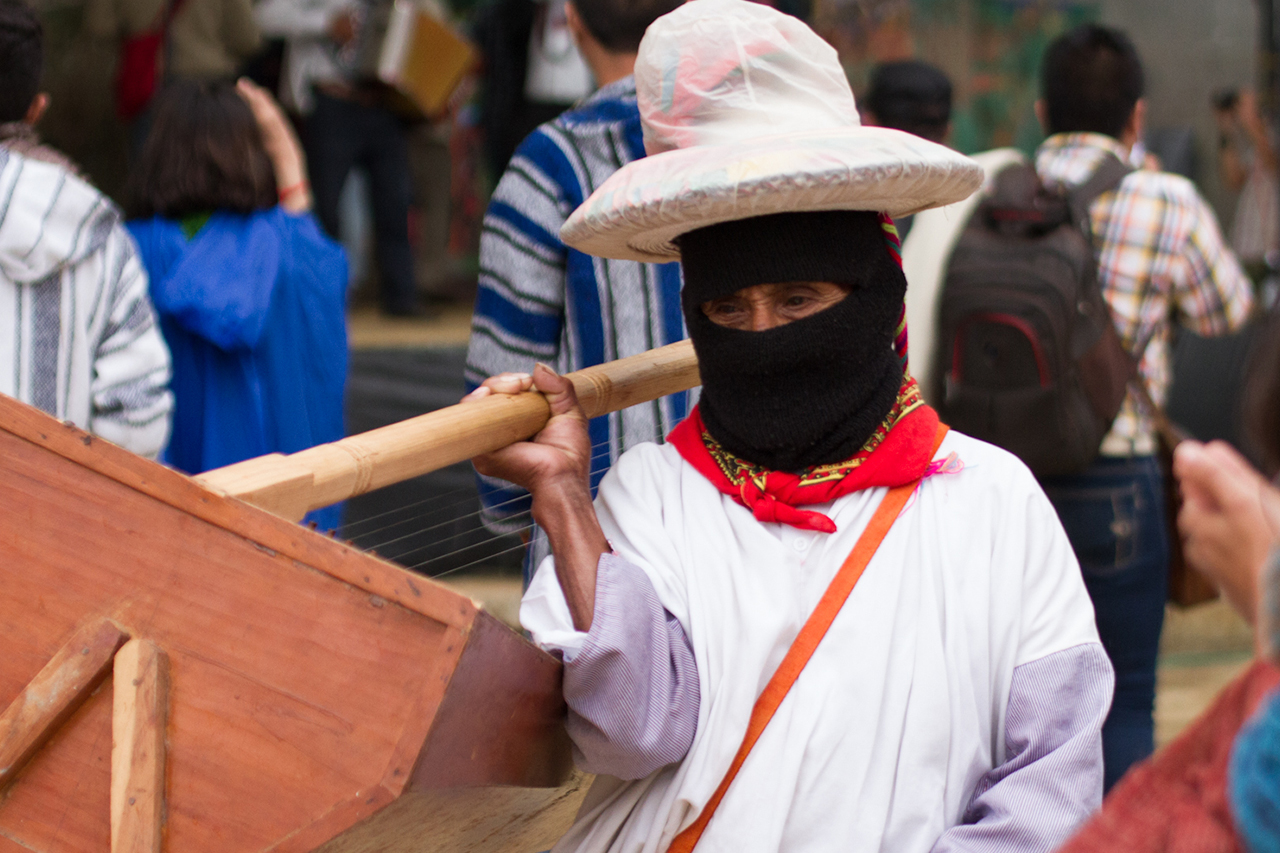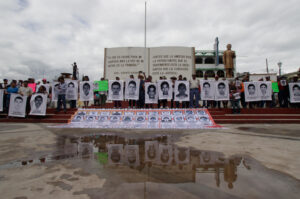The festival, organized by the Zapatistas in their autonomous territory, began promptly at 10 in the morning. The human heat and blazing sun draped those that arrived at first hour to enjoy the artistic works of the Zapatistas. At the entrance of Caracol de Oventik, those that arrived where invited to self-reflect on “the art of solidarity” – with a sign that asked if they had already visited the teachers, a reference to the blockades and encampments of teachers who have been protesting the Mexican neoliberal education reform.
